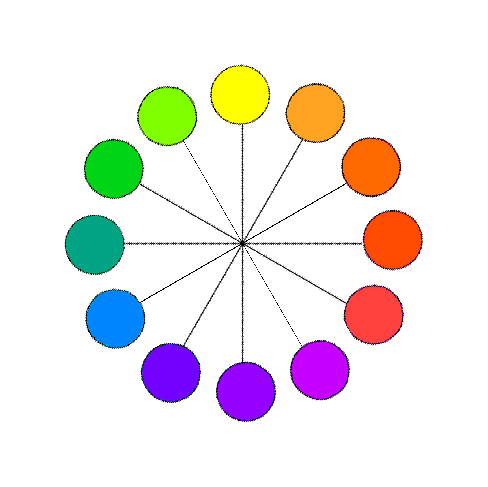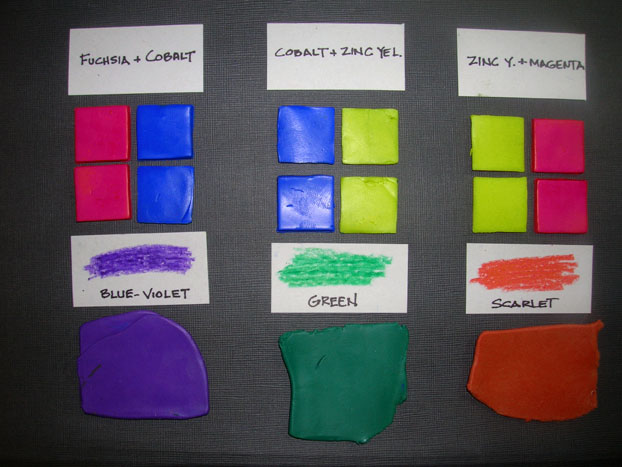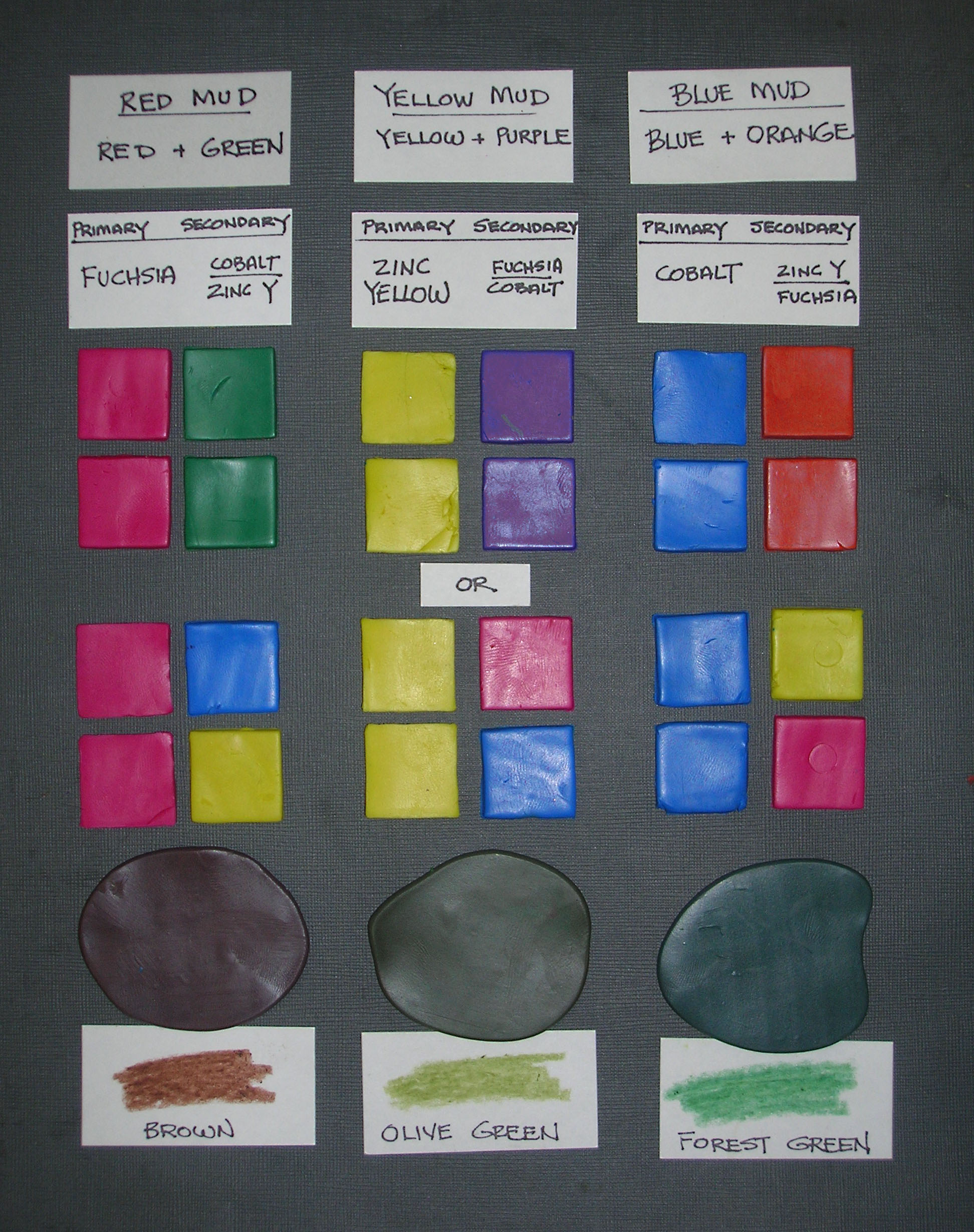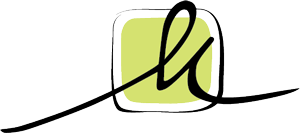The concept of complementary colors is one of the cornerstones of color theory.
Complements are Opposites

The traditional way to define complements is that they are opposite each other on a color wheel. The problem with this definition is which color wheel to use. RYB? RGB? CMY? Newton? Munsell? Itten? Ives? Oswald? All have different complements.
Complements Complete
Notice that the word is complementary not complimentary. The word complementary comes from complete. If you have all three primaries in equal amounts you have complete color. You can think of complements as “that which completes.”
Using the Red Yellow Blue system we are most familiar with, the complements are:
- Yellow + Purple (Purple = Red + Blue)
- Red + Green (Green = Blue + Yellow)
- Blue + Orange (Orange = Red + Yellow)
- Each pair of complements has Red + Yellow + Blue.
The problem with this definition is what is the color of “complete color” – what color is in the middle of the circle? Gray? Mud? Black? Brown?
Complements Make Gray
Another traditional way to define complements is that they mix to make gray.
The problem with this definition is that it comes from the world of optics. If you spin the complements of light together they will merge optically to make gray. This is light mixing, not pigment.
Complements Make Mud
Another definition is that complements mix to make a neutral mud in the middle of the color wheel. The problem is that this implies that you if you mix any color and its complement in equal amounts you will get the color that is in the middle of the color wheel.
The reality is that somewhere along the line between two complementaries you will get to a neutral color but it will not be the half and half mixture that does it.
Exercise: Test Mixing Complementaries
You can try this in any medium and with any primaries.
Select three primaries. Mix them two at a time in equal amounts to get three secondaries. I used the Premo primaries Fuchsia, Cobalt and Zinc Yellow. I chose Fuchsia instead of Cadmium Red for my red because in the test mixing we did last week for secondaries, we saw that Cad Red is a bully color.
There is no point in using it to test mix for variations of complementary color because it simply takes over in every half and half mix.
I’m starting with the Zinc Yellow and the Cobalt Blue because the test mixing showed them to be the strongest colors.
The handout includes test mixing with Cadmium Yellow and Turquoise Blue even though they were both wimpy colors.
Mixing Primaries with Complement
I mixed the primaries half and half and made the secondaries Blue Violet, Green, and Scarlet.They match the crayola crayons of the same name. 
These three secondary colors are actually pretty close to the complementary colors in the CMY system. Cyan Blue’s complement is Scarlet Red Magenta’s complement is Green Yellow’s complement is Blue Violet.
Mix the complementary pairs in equal amounts. There are two ways to do this:
If you mix 2 squares of Zinc Yellow with 2 squares of its complement, Blue Violet (the top four squares), it is the same as mixing: 1 square of Fuchsia,1 square of Cobalt, and 2 squares of Zinc Yellow (the bottom four squares). The photo below shows this method of mixing complements without needing to mix the secondaries first. 
Use the new PDF Handout to test mix complementary colors using different combinations of primary colors. Each of the four sets of primaries with result in complementary mixes in different colors.
Analyze results. Notice that the Yellow/Purple mix has more yellow – 1 red, 1 blue and 2 yellows – it will be yellow mud.
With Fuchsia, Zinc, and Cobalt Premo primaries:
- Blue Violet and Yellow = yellow mud (Olive Green)
- Scarlet and Cobalt = blue mud (Forest Green)
- Green and Fuchsia = red mud (Brown)


April 25, 2008 at 2:44 am
I stumbled onto your site when I was looking for a way to duplicate a fabric color in polymer clay and it’s fascinating. Now I have to go back and do ALL of the tutorials. Thank you so much for all the time and effort it took to put these out.
January 19, 2007 at 1:50 am
Pfeeeyou! ( said in French Fiou!)
here I was with my friend trying to make those mixes and got all mud., did it again. Still not right mud!
So terrible of me I thought you had it wrong or I did .
My problem is that iIhad not read correctly till the end.
I did get the mud mud mud.
So now I am jumping for joy.
Thank you for those great lessons.
January 16, 2007 at 11:16 pm
Thanks, Maggie for giving these tutorials. I regret I did not get to take your class at Ravensdale and am planning to work along with these tutorials as best I can. I thought I was caught up until today. I am falling over with several confusions. I made and baked the grid using Premo clays to get the secondaries and even baked another set with the 1/2 white. My problem today is understanding the instructions for mixing the complementary set. If I understand your example, we can start with fuchsia, z. yellow and cobalt. I have the cut out and notice that the right side of your first set has magenta as well. I do not understand how to do this group. Do I do one set for the ones above and a second set for magenta, g.yellow and turquoise?
Judy
Hi Judy – Thanks for pointing out the mistake I made in labeling. I think of Premo Fuchsia as magenta – and just called it that on the right side. After talking with you I decided to do both the photo and the handout over again to try to make the exercise easier to understand. It should now be clear as mud.